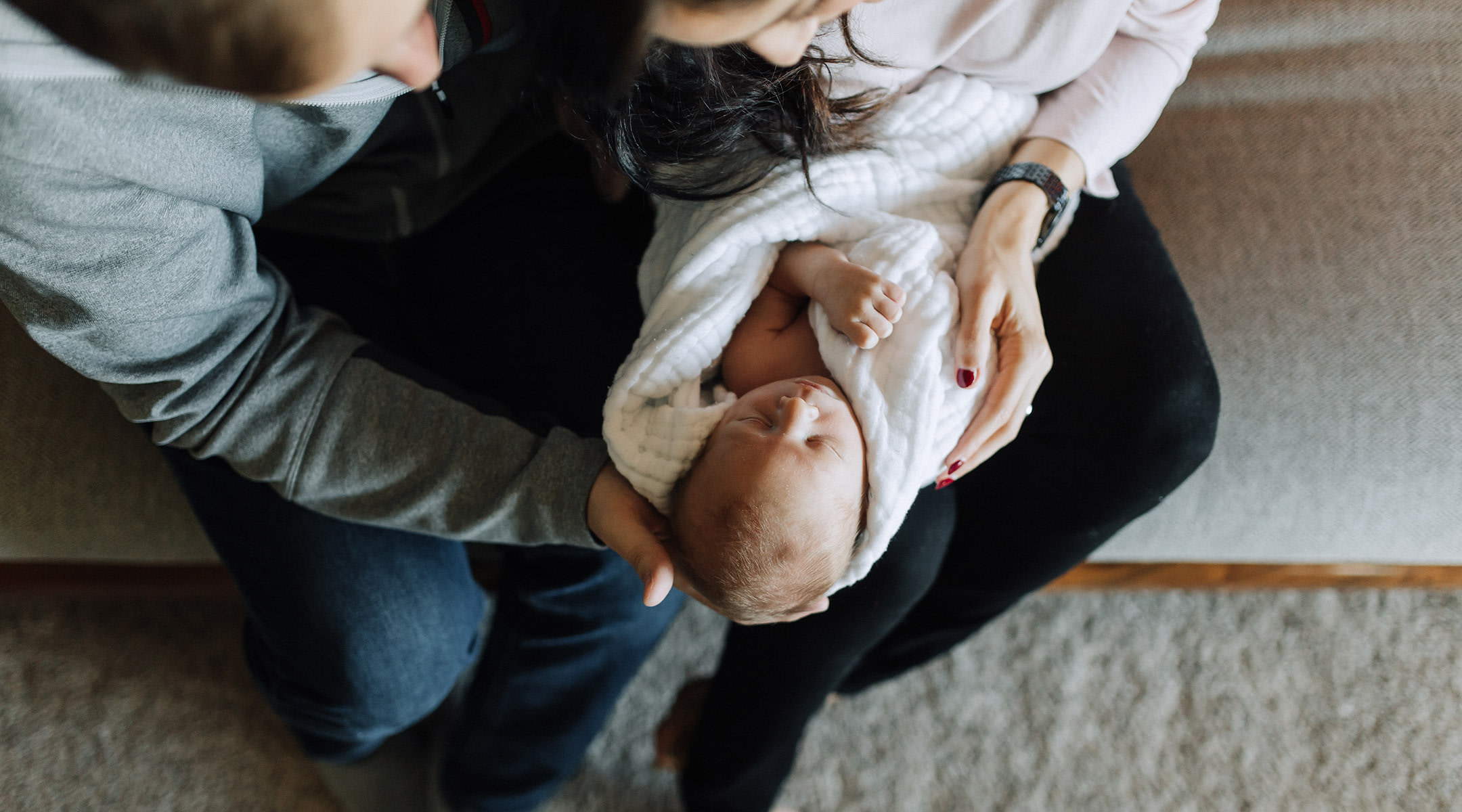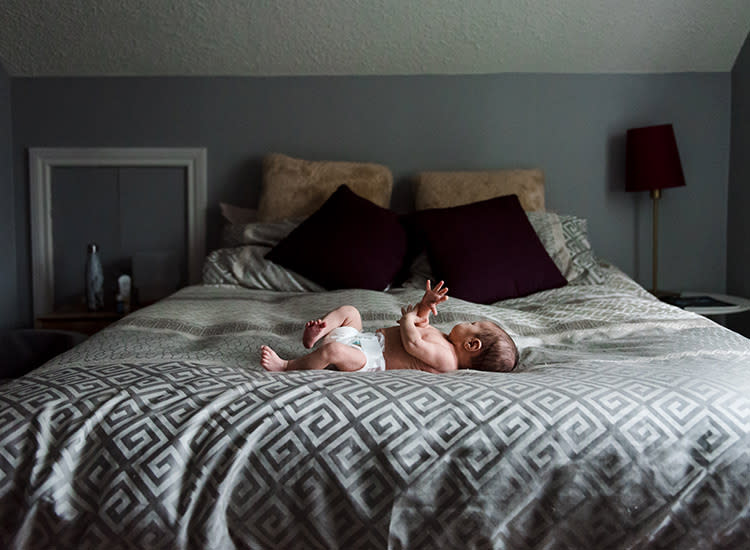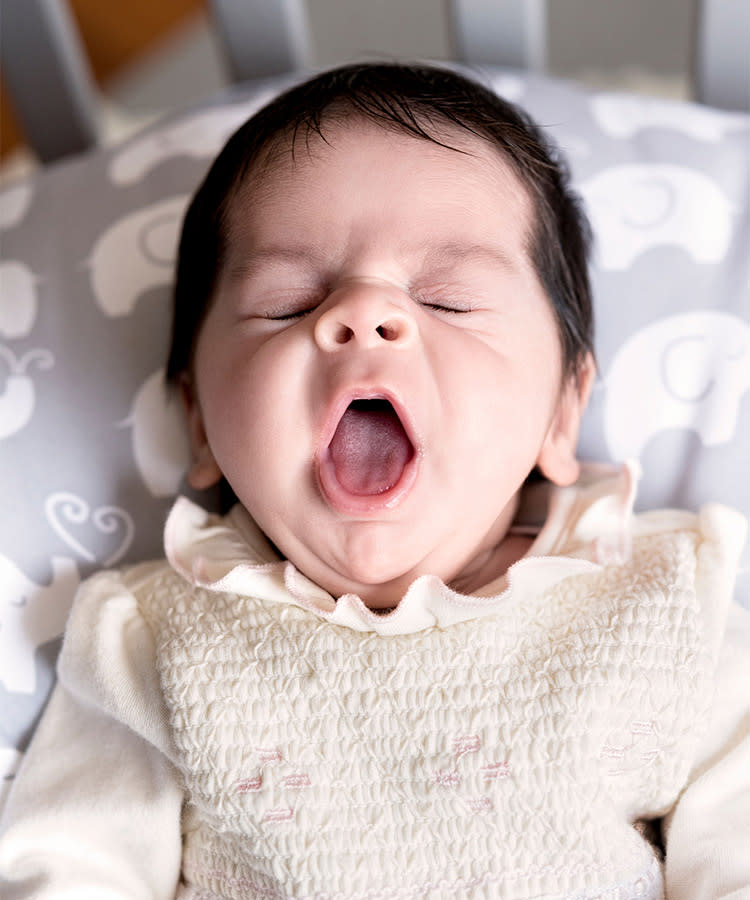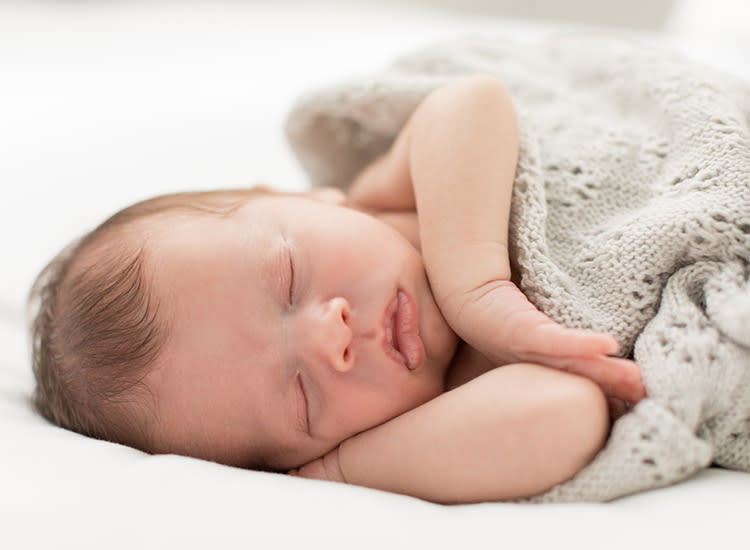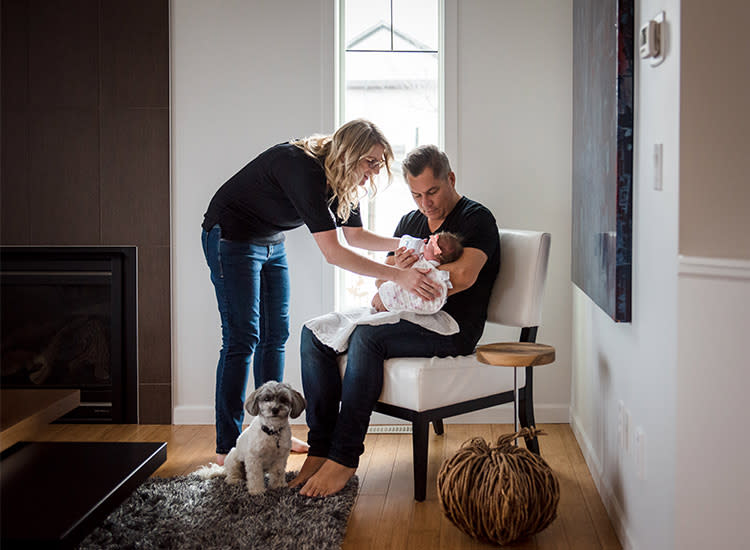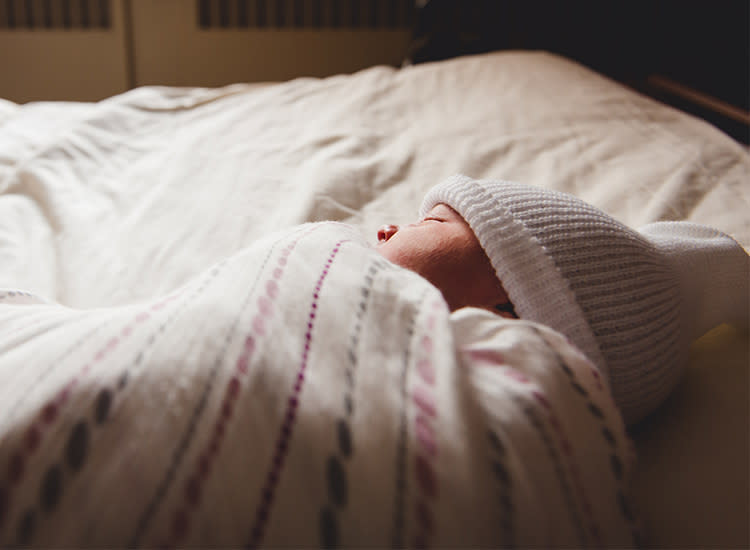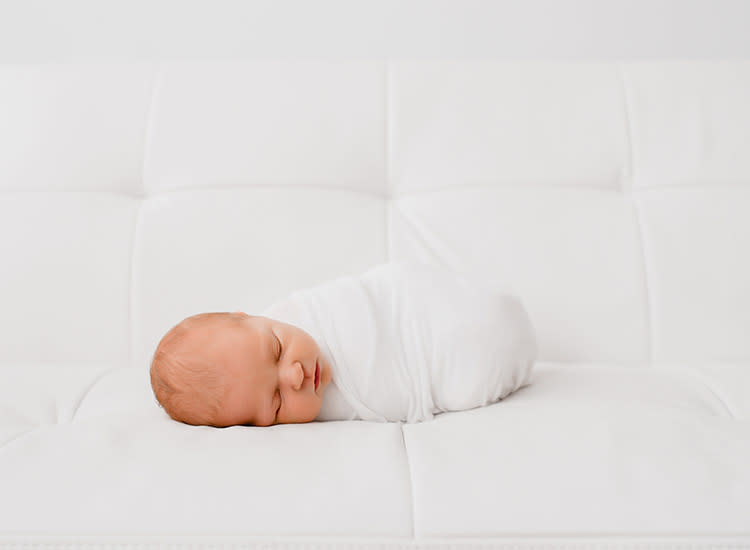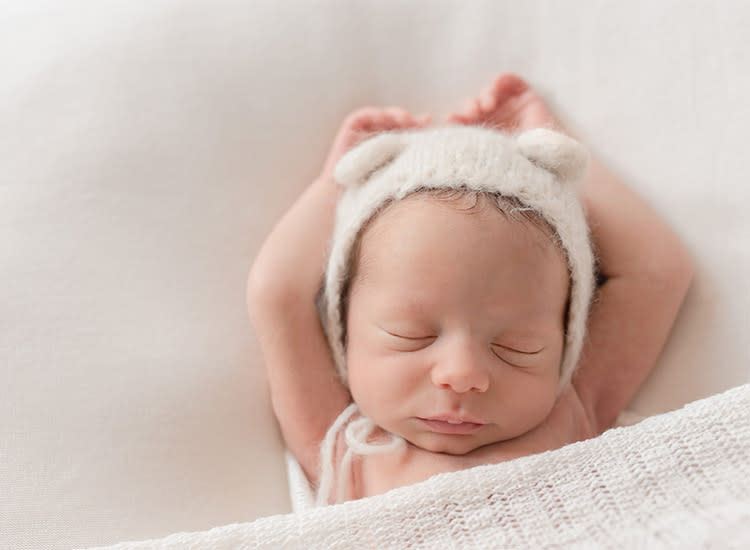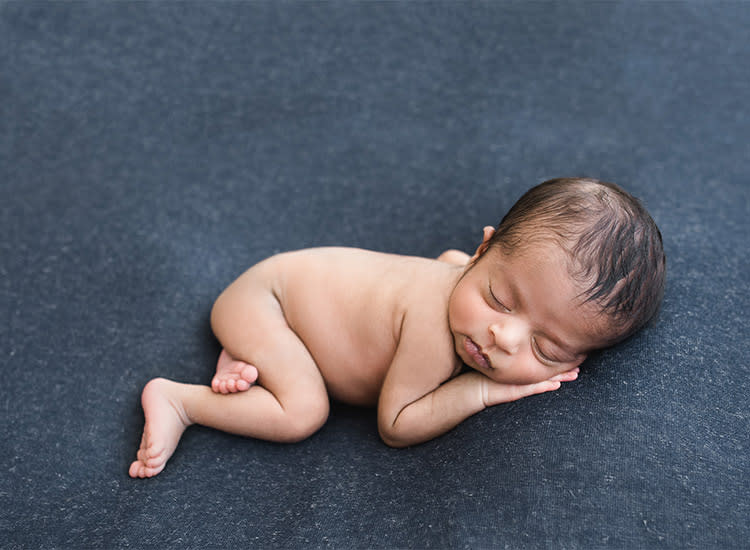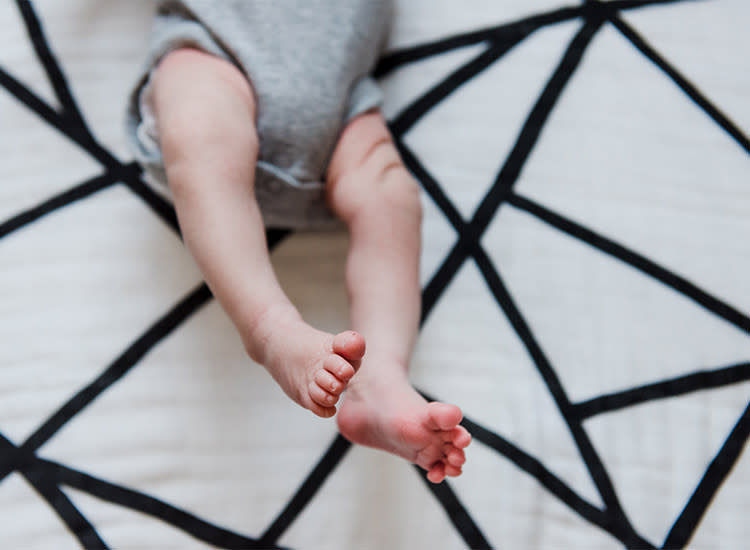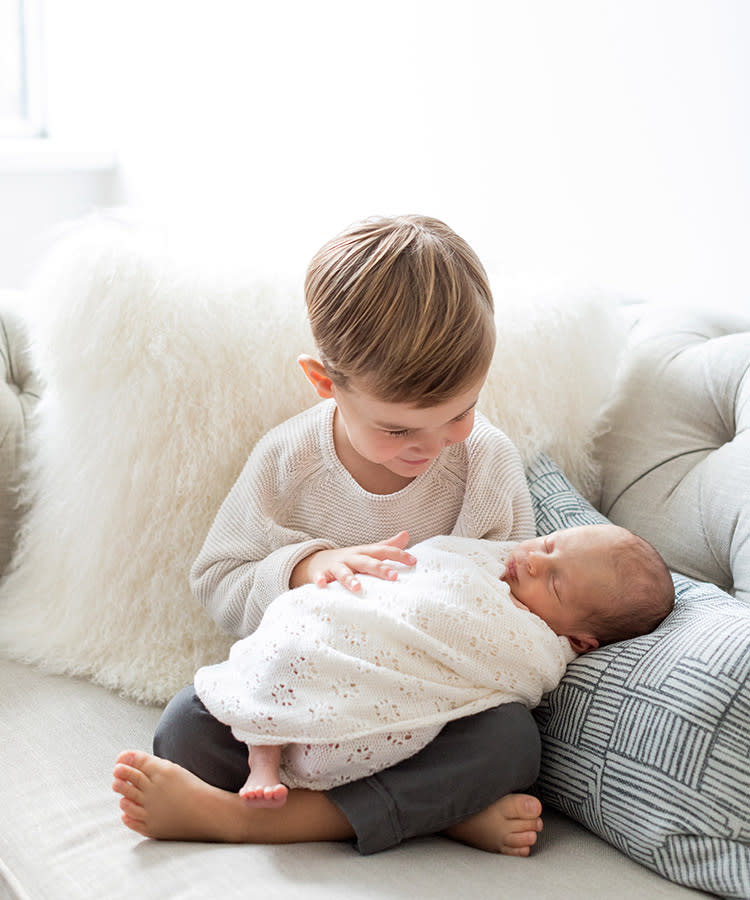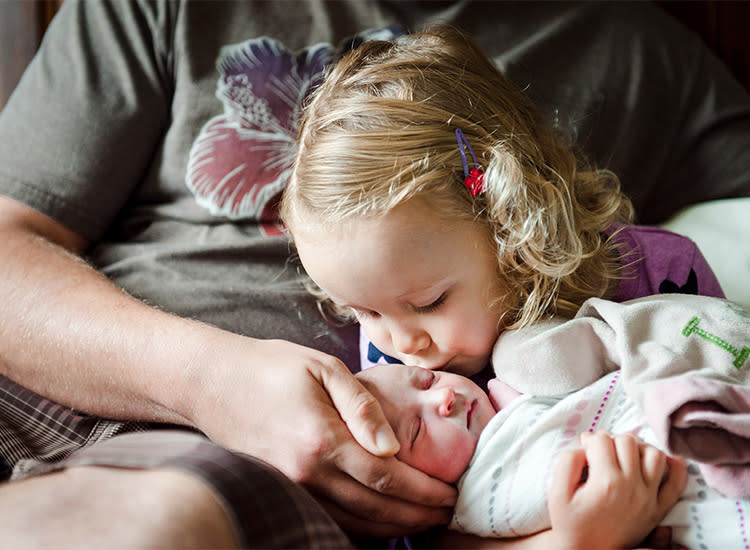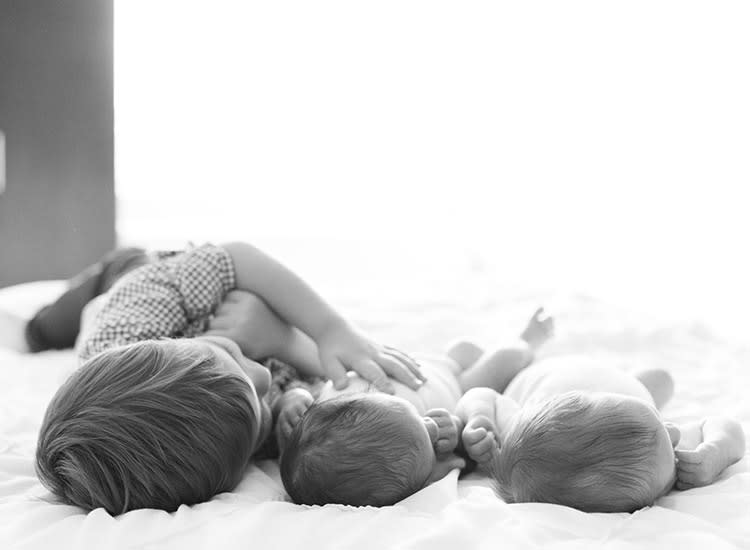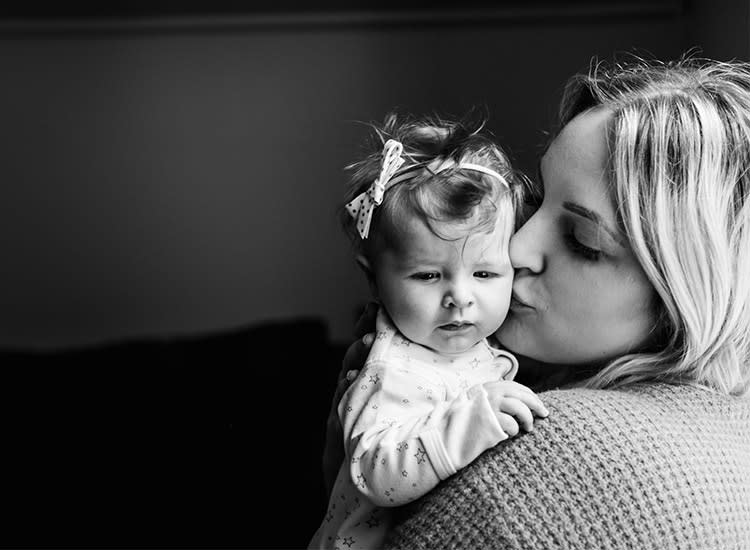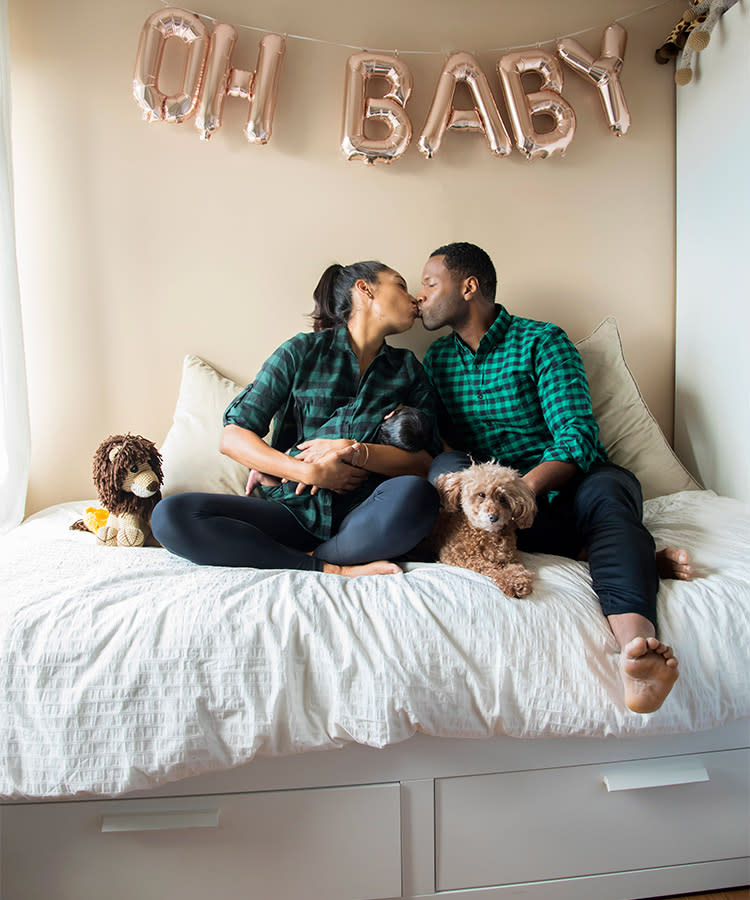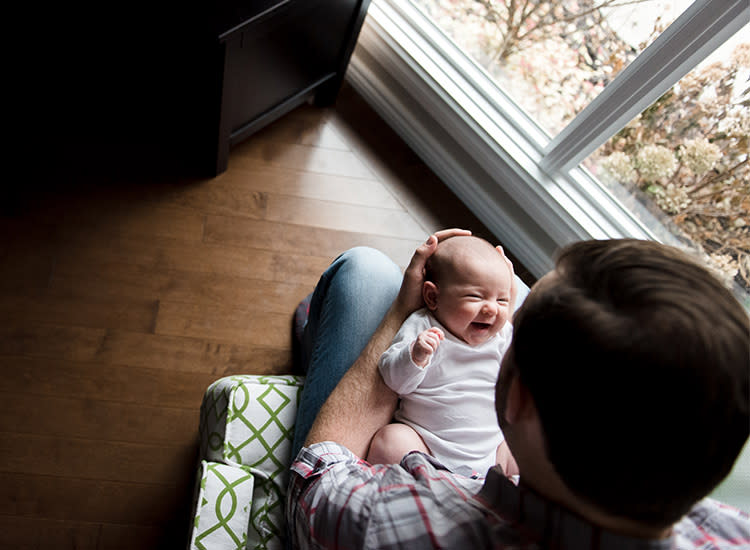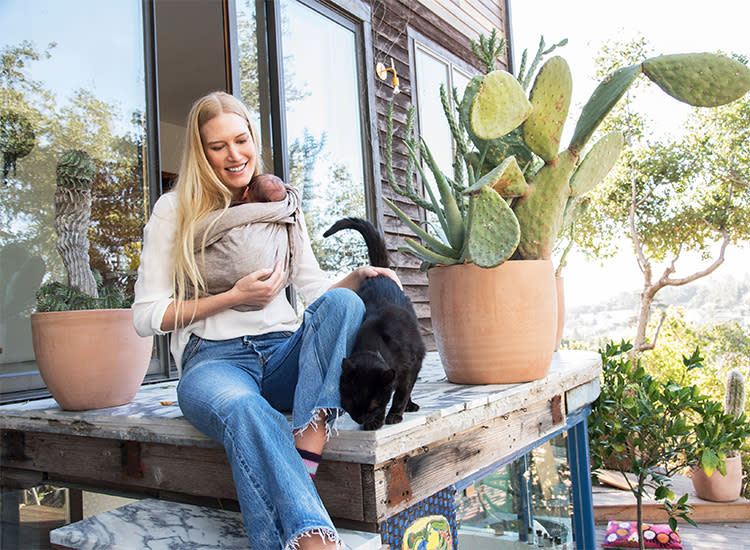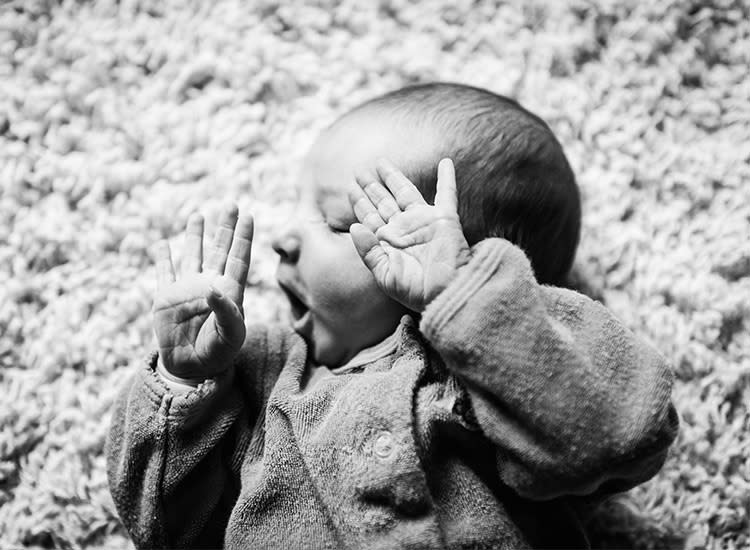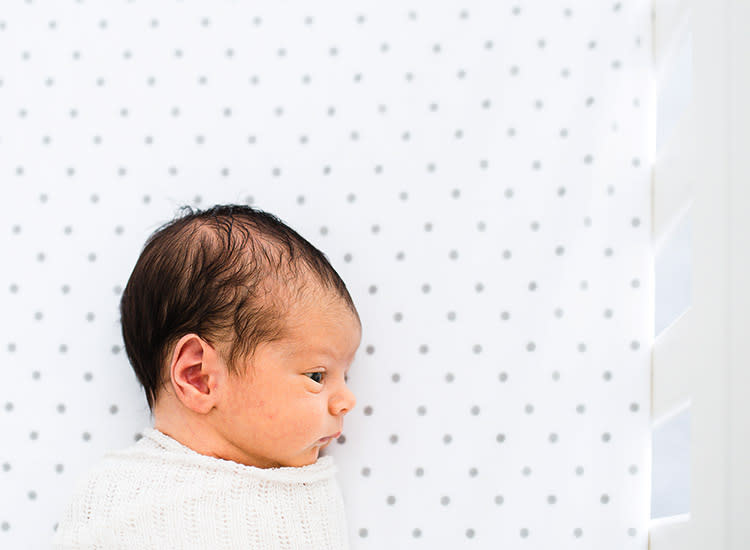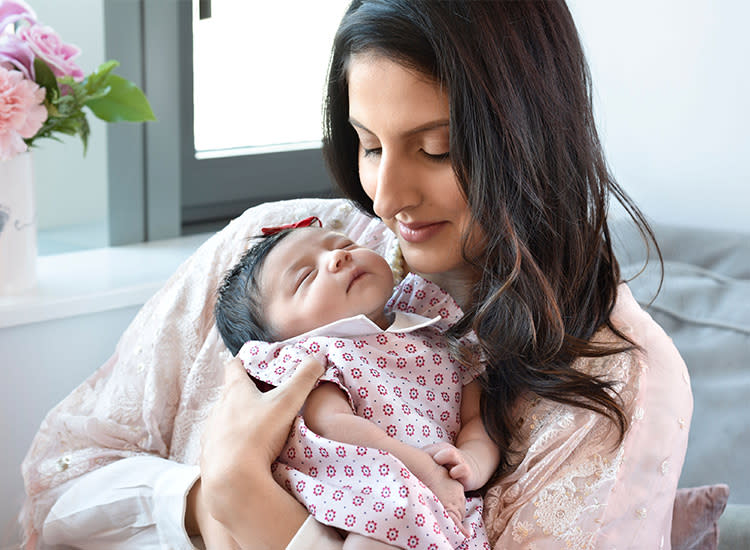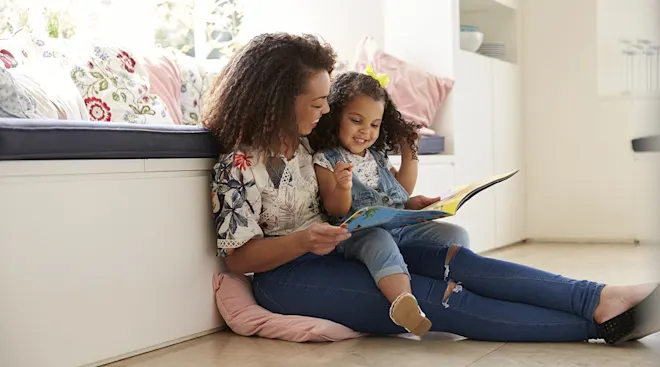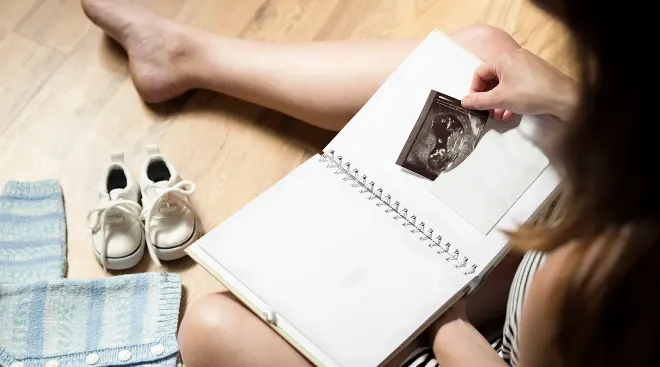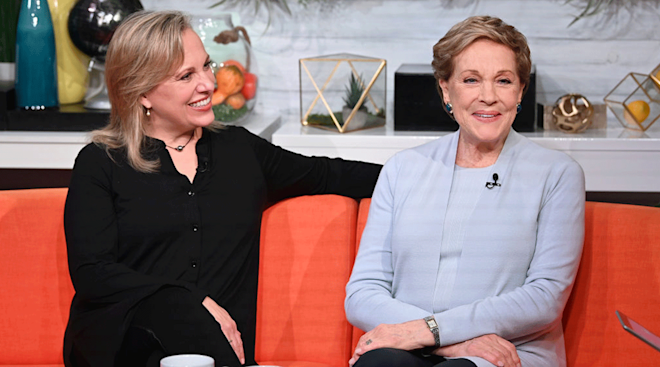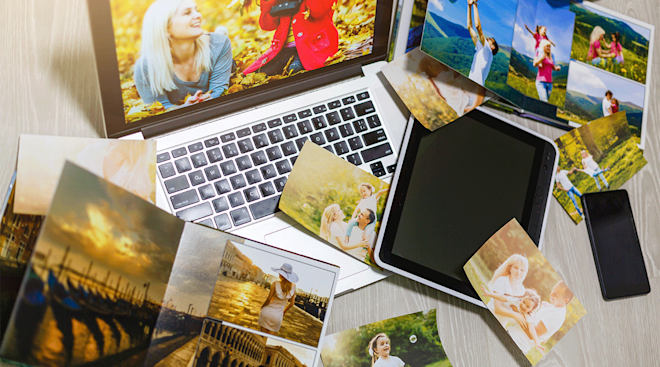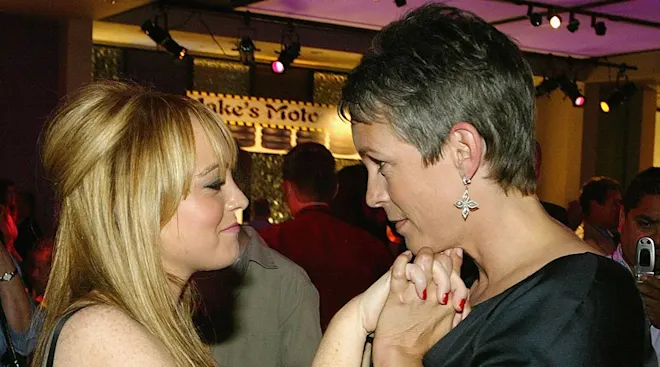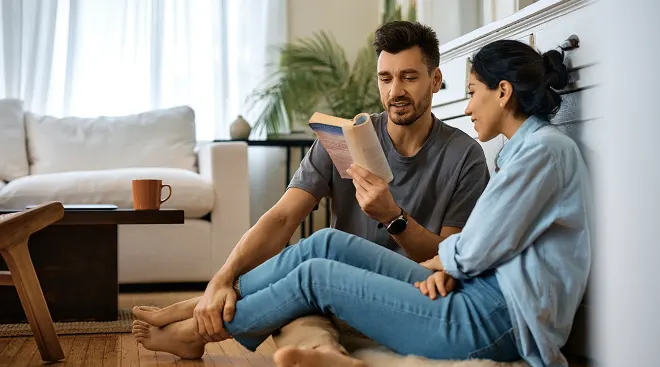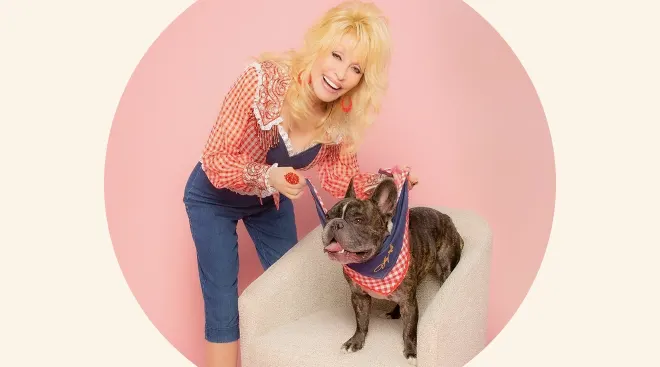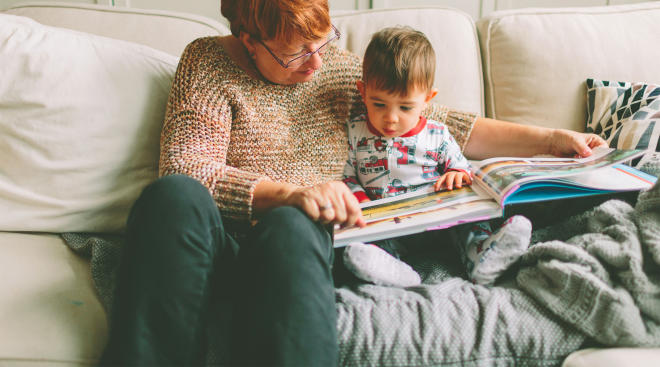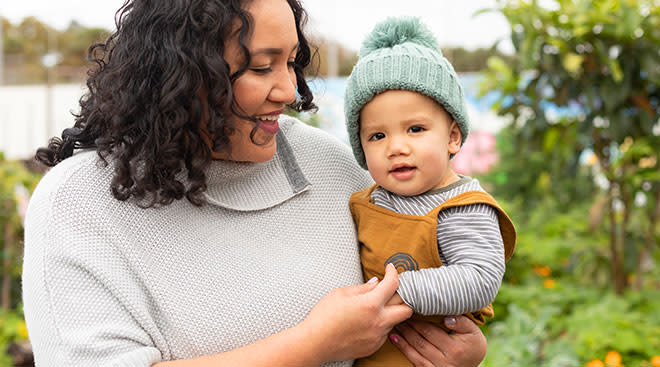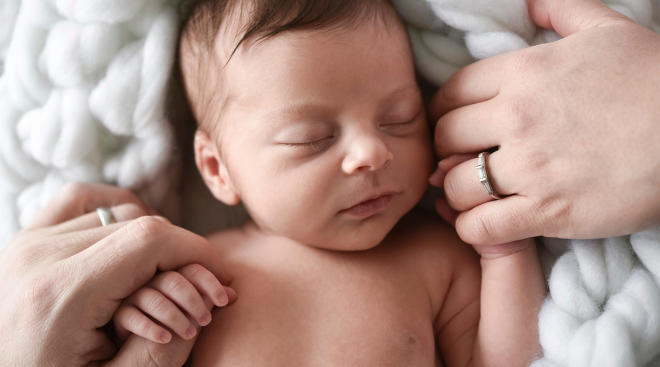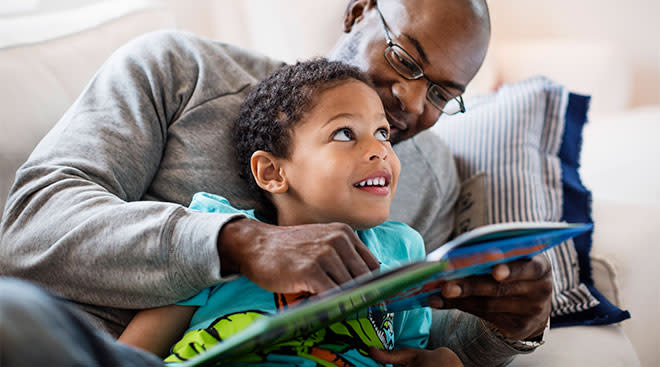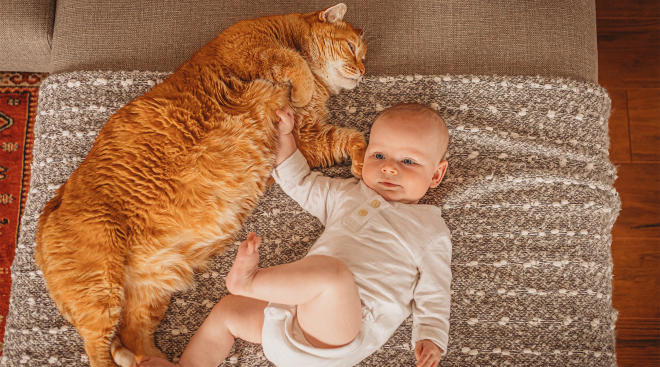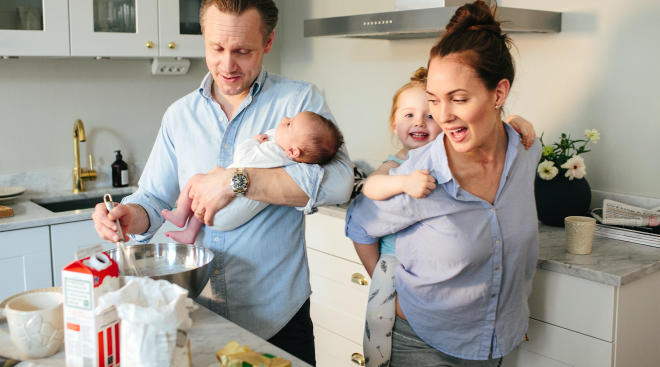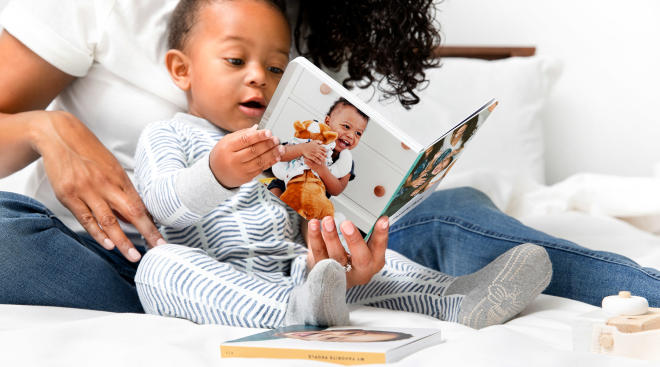Newborn Photography Tips: How to Nail Your DIY Newborn Pictures
Thinking back to baby’s newborn days, a lot of moms find them a blur. What with caring for a brand new baby and recovering from childbirth, it’s understandable for those precious details—baby’s tiny toes, that wrinkly skin, those heart-melting yawns—to be less than crisp in your mind. Which is why many parents opt to celebrate baby’s arrival with a newborn photoshoot. You can hire a professional newborn photographer, or choose to take those newborn pictures yourself. But if you’re going the DIY route, there are a few tricks of the trade to keep in mind. Here, four professional photographers offer their best tips for capturing swoon-worthy newborn photos.
As with so many things, timing is everything—but deciding when to take newborn pictures depends on what kind of photos you’re after. “If you want to capture baby sleeping and still with that classic wrinkly newborn skin, then you’ll want to take photos within the first two weeks,” says newborn photographer Kelly Marleau of Fiddle Leaf Photography. “If you’re feeling great after birth, then while you’re waiting to go home from the hospital bring your camera out and see what you can get. Roll the bassinet right next to the hospital room window and take a few photos of baby napping.” After all, newborns are still in that sleepy, cuddly stage and are easy to photograph—but after two weeks babies become more alert and potentially fussy. On the other hand, if you’d like to get more eye contact and capture more of baby’s personality, Marleau suggests waiting a few months.
Any photographer will tell you light can make or break a photo, so consider when and where your home gets the best natural light. “I tend to schedule my sessions in the mid-morning,” says photographer Heather Mohr. But more important than time of day, she says, is the direction of the light. “Your best bet is to find a window that doesn’t have direct sunlight streaming into it—ideally one that faces north or south. Direct sun can cause harsh light and shadows, which is probably not what you’re wanting for your newborn photos.”
A well-lit area with even light is key. If you try to do your newborn photoshoot in a poorly lit area or at night, you’ll likely end up with grainy, blurry newborn pictures, Marleau says. Instead, she suggests finding a room with nice light, cozying up to the window and then turning off all the other lights in the room.
“For the best photos, you want baby to be calm,” says photographer Michelle Rose Sulcov of Michelle Rose Photo. “Sound machines can help lull your little one into a contented state.” A happy baby makes your newborn photoshoot go much smoother, but “the easiest way to get a great shot is when baby is peacefully sleeping,” she adds. The trick, Sulcov says, is to feed baby before the shoot. (Ever hear of the phrase “milk drunk”?) “Also be prepared to potentially give baby a quick snack or full feed during the session if they’re crying.”
Aside from making sure your newborn has a full belly, you’ll also want to ensure the room is toasty warm to keep baby comfortable. “There’s nothing worse than trying to pose a sweet little baby with an air conditioner blasting,” says photographer Charlie Juliet. “No matter how hot it is outside, keep it room-temperature indoors. A cold baby won’t sleep well through a photoshoot, so I try to keep the room as cozy as I can without everyone melting.”
Baby is of course the star of the photoshoot—but adding in a few props can really make your newborn pictures shine. Need some ideas? “Most people have things around their house they can use,” Mohr says. “Household baskets or Moses baskets can all work well as a prop for your baby. Make sure to put lots of padding on top so baby is comfortable! Baby’s safety and comfort are always the most important things to consider.”
Another handy prop to have: a breastfeeding pillow, like the Boppy. “It can go a long way in helping you nail the perfect photo of baby,” Sulcov says. “Whether your little one is asleep or awake, it’ll keep your hands free and baby upright with their neck protected. Placing a blanket or swaddle over the Boppy will help hide the prop—just avoid big, bright patterns that could get distracting.”
It’s easy to obsess over styling the perfect newborn picture, but safety should always come first. “Never leave baby unattended, especially around pets,” Marleau cautions. “Also, if you’re shooting from above, especially with a heavier DSLR camera, make sure you put the neck strap on, just in case the camera slips from your hands.”
To get crisp newborn pictures, your camera lens should of course be smudge-free. “If you’re using your phone, I recommend first making sure the camera lens is clean. Swaddles are great for cleaning the camera!” Marleau says. Another trick to getting great newborn photos: Keeping your hands steady. “Give the phone time to focus, take a breath in, hold it, then take the shot,” she suggests. “By holding your breath, you’re less likely to shake as you take the picture.”
When you think of classic newborn pictures, you probably conjure up images of tiny, swaddled babies. But how do newborn photographers get such perfect swaddles? “My biggest piece of advice when it comes to swaddling is this: Don’t be afraid to pull the wrap super tight!” Mohr says. “Babies like it, and it’s the only way to ensure they won’t escape. Babies can be so wiggly!” We all want to nail picture-perfect swaddles, but Mohr recommends starting with a basic swaddle wrap to make sure baby is contained. Then, take a second swaddle blanket and experiment with different wraps. “That way you’re not struggling to get a pretty wrap with baby’s arms and legs flailing!”
The froggy pose. The tushy up pose. The taco pose. Photographers have come up with myriad ways to pose babies for picture-perfect shots—but for DIY newborn photos, it’s best to keep things simple. “It takes pros years and hundreds of hours of practicing to fine-tune posing,” Mohr warns. Her advice: Let go of the expectations that your newborn pictures will look like that if you’re not a professional photographer. Of course, that doesn’t mean you can’t still take great photos of baby! “I’d stick to very simple poses that work with baby’s natural positions,” she says. For example, take a sleeping baby and gently raise their arms above their head. “It’s an easy, adorable pose that a parent can do. Babies like to be in this position anyway, which makes it much easier to accomplish! Add a cute hat (or not) and you’re good to go.”
Another great pose for a DIY newborn photoshoot: Putting a sleepy baby on their side, Sulcov says. “You can then play with the positioning of baby’s hands to find the cutest pose. Of course, if baby isn’t in the mood to sleep, open-eyed pics are gorgeous too.”
While plenty of newborn pictures feature baby in the buff, it can get messy fast. Mohr’s pro tip: Keep babies in diapers when possible, and only remove them for a few minutes of naked baby posing. “If you’re observant, you can get an idea of when baby might need to have a BM. They often get a little squirmy and sometimes even arch their back a bit,” she says. In case your little one decides to go at an inopportune moment, Mohr suggests having an extra diaper nearby to quickly put over baby. Sulcov also knows a thing or two about baby messy mid-photoshoot. Her advice: Make sure to set up the exact shot you want before removing the diaper.
“Don’t forget the details!” Marleau says. Capturing close ups of baby’s tiny hands, feet, mouth and eyes are musts—but you’ll also want to document baby’s arm and leg rolls, double chin, umbilical cord and peach fuzz on their shoulders and ears, she says.
If you intend to involve baby’s siblings in your newborn photoshoot, consider doing those group shots first—“that way they can take a break and immediately go play,” Juliet says. “It’s a win-win, because you can continue with the session and your toddler isn’t forced into staying when they don’t want to participate any more.”
The best way to incorporate siblings into your newborn pictures is naturally! “Forcing a sibling to sit and smile while holding a newborn baby is pretty much a guarantee for a meltdown,” Marleau says. Instead, she recommends going for more candid shots.
Need some ideas of how photograph your kids together? If the sibling is young and not quite ready to hold baby by themselves, try having them lie on the bed next to your newborn, Marleau suggests. To get them to interact with baby, give them prompts, like “can you touch baby’s nose?” or “what does baby’s hair smell like?” If the sibling is a older and can confidently hold baby in their lap, try giving them a task, like reading baby a book.
If baby’s sibling is a little reluctant to participate, consider having them hold a comfort item, like a specific blanket, doll or figurine, Marleau says. Plus, it gives them something to fiddle with while you’re trying to get the shot. And if that fails, there’s always bribery. “I bring a variety of treats, like stickers or raisins,” Juliet says. “Sometimes it just takes a gummy bear to get that sweet sibling portrait that mom will cherish forever.”
“When I know a toddler is going to be present during a newborn photoshoot, I make sure there’s an extra person there to help us, whether it’s a babysitter, grandparent or family friend,” Juliet says. “Toddlers don’t last very long and we need someone other than Mom or Dad available to play with the sibling when they want a little break.
When you work with a professional newborn photographer, they’re guaranteed to snap a few photos of you and your partner together with baby—but when you go the DIY route, getting a photo of yourself with your newborn is a little tricker. Problem solved: Marleau recommends using a tripod (or propping your phone up) and your camera’s self-timer.
Once it’s all set up, get everyone in the frame and set your timer. (Just make sure you get everything set up before you bring your kids into the shot so they aren’t sitting still while you’re trying to figure out the best angle.) To get everyone to crack a genuine smile, try tickling or cracking a funny joke, Marleau suggests. If it’s just you and baby, rub their head, hold their hand, feed them or count their toes—“these are all things that’ll make your photo look more natural,” she says.
Wondering where to take those family shots? “I tend to gravitate towards whichever room gets the best light—usually it’s the parents room,” Sulcov says. “I love doing a group shot on the parents’ bed or a comfortable couch.”
When you hire a professional photographer, the photoshoot will likely last a couple of hours—but instead of taking your DIY newborn photos all in one go, Marleau suggests taking them over the course of a few days. “Don’t try to set aside hours to take photos. You’re tired, you’re going to need to feed in between photos and you’re both guaranteed to be completely over it by the time you’re done if you work at it for that long!” she says. “Instead, I recommend setting aside a few minutes each day to take a couple of photos, and then over a few days you’ll have a great variety of shots.”
You’re always going to be anxious about whether you captured great newborn pictures—especially when you’re taking them yourself. You might look back over your photos and wish you had taken more, but you’ll never lament taking too many. Sulcov’s advice: Just keep snapping. “If you take tons of photos, one of them is sure to be ‘the shot,’” she says.
As much as we all want perfect photos, newborn photoshoots don’t always go as planned. “Keep the point of the photos in the back of your mind—to capture this time of your life,” Marleau says. “Think about the details of baby that you’re going to want to remember and capture those. Look for relationships and emotion. I bet a few years down the road, those images will mean more to you than the ‘perfect image’.”
The key to a successful newborn photoshoot? “Patience and staying calm,” Mohr says. “Babies can pick up on your energy, so getting yourself into a calm state of mind can’t be stressed enough. Have fun with it, and if it doesn’t work the first time, the beautiful thing is that when you’re doing DIY newborn photos, baby is in your house to photograph anytime you’d like!”
Didn’t quite capture the right light? Wish you had framed the photo differently? No sweat! A little editing can go a long way. If you’re looking for the best photo editing tools, Marleau recommends SnapSeed, VSCO and Filmborn for editing and cropping phone photos.
Here’s the best news of all: Sulcov reminds us that if all else fails, there are lots of awesome newborn photographers out there who live to capture these precious moments!
Plus, more from The Bump:
Navigate forward to interact with the calendar and select a date. Press the question mark key to get the keyboard shortcuts for changing dates.

































